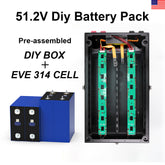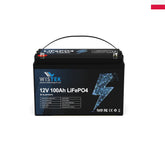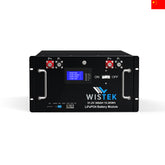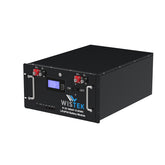¿Cuántos paneles solares necesitas para generar 15kwh diarios?
En el mundo actual, con el aumento de los costos de la energía y las preocupaciones ambientales, cada vez más propietarios de viviendas y empresas invierten en sistemas solares para generar electricidad limpia y renovable. Si intenta calcular cuántos paneles solares necesitará para generar 15 kWh al día, no está solo. Comprender la producción solar, el dimensionamiento del sistema y todas las variables involucradas es esencial para realizar una inversión inteligente en energía solar que satisfaga sus necesidades. Esta guía le guiará a través de los cálculos, las consideraciones y ejemplos reales para ayudarle a generar la cantidad adecuada de energía solar para su estilo de vida.
- Entendiendo cómo los paneles solares generan electricidad
- Factores que afectan su capacidad de generar 15 kWh diarios
- Cómo calcular la cantidad de paneles necesarios para generar 15 kWh al día
- Cómo seleccionar los paneles adecuados para generar 15 kWh diarios
- Evaluación del sitio para generar la máxima producción
- Ejemplo real: Generación de 15 kWh diarios en diferentes estados
- Selección de inversor para generar 15 kWh diarios
- Almacenamiento de baterías para almacenar la energía generada
- Costos e incentivos para generar su propia energía solar
- Mantenimiento para mantener su capacidad de generar 15 kWh diarios
- Preguntas frecuentes sobre la generación de 15 kWh diarios
- Tu camino para generar 15 kWh diarios con paneles solares
Entendiendo cómo los paneles solares generan electricidad
Antes de calcular cuántos paneles solares se necesitan para generar 15 kWh al día, es importante comprender cómo funcionan. Los paneles solares están compuestos por células fotovoltaicas (FV) que captan la luz solar y la convierten en electricidad de corriente continua (CC). Esta electricidad pasa a través de un inversor, que la transforma en corriente alterna (CA) apta para su uso en el hogar o negocio.
¿Qué es un kWh y por qué es importante?
Un kilovatio-hora (kWh) es una unidad de medida de energía. Un kWh representa el consumo de 1000 vatios de potencia durante una hora. Generar 15 kWh al día significa que su sistema necesita producir suficiente electricidad para operar 15 000 vatios durante una hora o 1000 vatios durante 15 horas. Esta cifra es la base de su cálculo.
Cómo se mide la potencia de los paneles solares
Cada panel solar se clasifica en vatios. Por ejemplo, un panel solar residencial común podría tener una potencia nominal de 350 vatios en condiciones ideales. Sin embargo, la potencia real será menor dependiendo del ángulo de instalación, la sombra, el clima, la temperatura y la ubicación geográfica.
Factores que afectan su capacidad de generar 15 kWh diarios
Al determinar cuántos paneles se necesitan para generar 15 kWh diariamente, hay que tener en cuenta factores que inciden en la producción.
Horas de luz solar y su ubicación
El primer factor es el promedio de horas pico de sol en su región: las horas del día en que la intensidad de la luz solar es suficiente para generar la potencia nominal. En EE. UU., esto puede variar entre 3 y 6 horas diarias.
Por ejemplo:
Arizona puede recibir hasta 6,5 horas pico de sol.
Nueva York puede recibir 4 horas pico de sol.
Seattle puede tener cerca de 3 horas pico de sol.
Esta variabilidad significa que un sistema en Arizona necesita menos paneles para generar 15 kWh diariamente en comparación con un sistema en Seattle.
Pérdidas de eficiencia del sistema
Incluso los mejores sistemas tienen pérdidas debido a:
Ineficiencia del inversor (aproximadamente entre el 5 y el 10 %)
Acumulación de polvo y suciedad (2-5%)
Pérdidas de cableado (1-3%)
Pérdidas de calor (hasta un 10%)
Estas pérdidas suelen estimarse en un 20 % en total. Por lo tanto, su sistema debe dimensionarse para generar más de 15 kWh diarios para compensarlas.
>>Ver también ¿Qué puedo usar para separar mis celdas LFP y/o forrar mi caja de metal para proteger mis celdas?
Cómo calcular la cantidad de paneles necesarios para generar 15 kWh al día
Repasemos el cálculo paso a paso.
Paso 1: Ajuste por pérdidas del sistema
Producción diaria objetivo = 15 kWh ÷ (1 – pérdidas del sistema)
Suponiendo pérdidas del 20%:
15 kWh ÷ 0,8 = 18,75 kWh
Esto significa que su sistema debe generar 18,75 kWh diariamente para entregar de manera confiable 15 kWh de energía utilizable.
Paso 2: Dividir por las horas pico de sol
Si vives en una zona con 5 horas pico de sol:
18,75 kWh ÷ 5 horas = 3,75 kW
Por lo tanto, su sistema debe tener una potencia nominal de 3750 vatios para generar la cantidad objetivo.
Paso 3: Dividir por la potencia del panel
Si utiliza paneles de 375 vatios:
3750 vatios ÷ 375 vatios por panel = 10 paneles
Resultado: necesitará 10 paneles de 375 vatios cada uno para generar 15 kWh diariamente en un área con 5 horas de sol.
Cómo seleccionar los paneles adecuados para generar 15 kWh diarios
No todos los paneles solares son iguales. Elegir paneles eficientes y de alta calidad le ayudará a garantizar la generación confiable de la energía que necesita.
Tipos de paneles
Paneles monocristalinos: más eficientes (19-23%) y ocupan menos espacio.
Paneles policristalinos: Menos costosos pero menor eficiencia (15-18%).
Paneles de película delgada: flexibles pero menos eficientes (10-12%).
Garantía y vida útil
Los paneles generalmente tienen una garantía de producción de 25 años, que garantiza que seguirán generando al menos el 80% de su producción nominal al final de ese período.
Evaluación del sitio para generar la máxima producción
Orientación e inclinación del techo
Los techos orientados al sur en el hemisferio norte son óptimos para una máxima exposición solar. Los ángulos de inclinación deben coincidir con la latitud para garantizar un rendimiento óptimo durante todo el año.
Sombreado
La sombra parcial causada por árboles, chimeneas o edificios vecinos puede reducir drásticamente la capacidad de generar 15 kWh diarios. Utilice herramientas como Solar Pathfinder para mapear la sombra a lo largo del año.
Ejemplo real: Generación de 15 kWh diarios en diferentes estados
Veamos un ejemplo comparando dos ubicaciones.
Ejemplo de Arizona
Horas pico de sol: 6,5
Factor de pérdida: 20%
Cálculo:
15 kWh ÷ 0,8 = 18,75 kWh
18,75 kWh ÷ 6,5 = ~2,88 kW
Panel de 2880 W ÷ 375 W = ~8 paneles
Ejemplo de Seattle
Horas pico de sol: 3
Factor de pérdida: 20%
Cálculo:
15 kWh ÷ 0,8 = 18,75 kWh
18,75 kWh ÷ 3 = 6,25 kW
Panel de 6250 W ÷ 375 W = ~17 paneles
Esto demuestra por qué la ubicación es fundamental para determinar cuántos paneles se necesitan para generar la misma producción diaria.
Selección de inversor para generar 15 kWh diarios
El inversor es un componente clave que debe dimensionarse correctamente para manejar la salida del sistema.
Inversores de cadena vs. microinversores
Inversores de cadena: rentables pero menos eficientes si los paneles están a la sombra.
Microinversores: Se instalan en cada panel y pueden aumentar la capacidad de su sistema para generar energía hasta en un 15 % en sombreado parcial.
Almacenamiento de baterías para almacenar la energía generada
Si quieres almacenar energía para usarla durante la noche, necesitarás baterías.
¿Cuánto almacenamiento necesitas?
Para un respaldo de un día completo, se necesitaría una capacidad de batería de al menos 15 kWh. Sin embargo, la mayoría de los sistemas están diseñados para almacenar entre el 30 % y el 50 % de la generación diaria para cubrir las cargas críticas.
>>Ver también ¿Es seguro descargar las baterías de plomo-ácido al 20%?
Costos e incentivos para generar su propia energía solar
El precio de un sistema para generar 15kWh diarios dependerá de:
Costos de equipo
Mano de obra de instalación
Permisos
Incentivos y créditos fiscales
El costo promedio de instalación por vatio en EE. UU. en 2025 es de aproximadamente $2,50 a $3,00. Un sistema de 5 kW costaría aproximadamente entre $12 500 y $15 000 antes de aplicar incentivos.
Incentivos
Crédito fiscal federal del ITC: 30%
Reembolsos estatales: varían ampliamente
Medición neta: créditos por el exceso de energía enviada a la red
Estos programas pueden reducir drásticamente el costo de generar energía limpia.
Mantenimiento para mantener su capacidad de generar 15 kWh diarios
Un cuidado adecuado garantiza mantener la producción.
Lista de verificación de mantenimiento
Inspeccionar los paneles trimestralmente
Limpie los paneles si se acumula polvo o polen.
Compruebe periódicamente el estado del inversor
Recortar los árboles para evitar que den sombra
Con un mantenimiento mínimo, podrá continuar generando electricidad de manera confiable durante décadas.
Preguntas frecuentes sobre la generación de 15 kWh diarios
¿Puedo generar 15kWh diariamente con paneles solares portátiles?
Los sistemas portátiles suelen tener una potencia mucho menor. Incluso una instalación portátil grande (p. ej., de 500 W) necesitaría más de 30 horas de sol perfecto para generar 15 kWh.
¿Qué pasa durante los días nublados?
Su sistema producirá menos, pero los sistemas conectados a la red obtienen la diferencia de la empresa de servicios públicos automáticamente.
Tu camino para generar 15 kWh diarios con paneles solares
Invertir en paneles solares para generar 15 kWh al día es una decisión inteligente para la independencia energética y la responsabilidad ambiental. Ya sea que viva en un clima soleado o en una región nublada, una planificación cuidadosa, equipos de calidad e instalación profesional le garantizarán la generación de la energía que necesita a diario. Al considerar sus opciones, recuerde:
La ubicación determina cuántos paneles necesita para generar 15 kWh diariamente.
Las pérdidas del sistema requieren un dimensionamiento superior a su necesidad mínima.
Los incentivos pueden reducir significativamente su inversión.
El mantenimiento es simple pero importante.
Siguiendo estas pautas, podrá diseñar con confianza un sistema que genere la electricidad limpia que necesita. Y cuando vea que su medidor eléctrico da vueltas, sabrá que su decisión de generar su propia energía fue la correcta.
























Leave a comment
All blog comments are checked prior to publishing